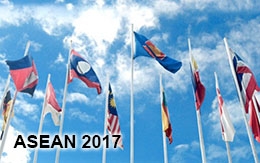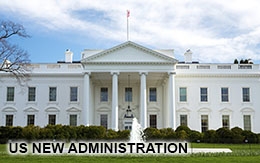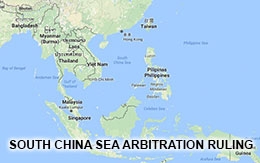How China’s actions at sea cause problems on land
Too often analysts of the South China Sea disputes tend to treat them as somewhat abstract debates over different modes of global governance. We also need to see them as a clear and present danger to the livelihoods and standards of living of millions of people.

The disputes in the South China Sea generate plenty of debate among experts but almost all of it takes place at a level far removed from ordinary people’s lives. There is more discussion about the future of the rules-based international system or about relations between China and the United States than about the impact of the disputes on individual citizens or on their governments. Yet in several areas of life, the arguments and conflicts over maritime claims are already having visible effects. In places, household incomes have fallen – with knock-on effect on local economies. Some countries are facing energy shortages that threaten economic growth and standards of living.
My argument here is premised upon the 2016 Award of the International Arbitral Tribunal. The tribunal’s ruling – binding on both China and the Philippines – was that none of the disputed rocks and reefs among the Spratly Islands, nor the isolated reef at Scarborough Shoal, generates an exclusive economic zone (EEZ). The tribunal also concluded that China’s claim to ‘historic rights’ beyond those agreed in the United Nations Convention on the Law of the Sea (UNCLOS) are not compatible with international law. In other words, the ‘U-shaped line’ that appears on Chinese maps is not a legitimate claim to marine resources.
Under UNCLOS therefore, China has no right to exploit marine resources beyond its own EEZ: i.e. beyond 200 nautical miles from its mainland coast and, perhaps, small circles of 12 nm radius around some of the disputed features themselves. Equally importantly, it has no right to prevent other states from making use of the resources that lie within their legitimate EEZs, stretching out 200 nm from their respective coasts. Yet it continues to do both with increasingly serious consequences for the region.
China ratified UNCLOS in 1996 but it continues to violate its provisions. This is both a threat to the current international order and, just as pertinently, to the domestic stability of the Southeast Asian littoral states. Three particular areas stand out: the impact on offshore gas and oil development, on fisheries and on domestic politics.
Offshore oil and gas
There have been significant declines in Southeast Asian states’ offshore oil and gas production in recent years as fields mature and output falls. New resources have been discovered under the South China Sea, but oil industry sources tell me China has used threats of force to prevent Vietnam and the Philippines from developing them. In the most recent example, the Spanish company Repsol was forced to suspend its development plans in areas off the coast of Vietnam in 2017 and again in 2018. In May 2017, President Duterte told journalists that his Chinese counterpart, Xi Jinping, had warned him that if the Philippines tried to develop gas fields under the Reed Bank in the South China Sea, “there would be war”. Anecdotal evidence suggests Malaysia, Brunei and Indonesia may have also been reluctant to pursue development too far offshore for fear of causing provoking a response from China.
These are not abstract problems. China’s actions have exacerbated falls in government revenues and problems with countries’ energy supplies. Reported figures suggest that Vietnam’s national oil output fell 12% between 2014 and 2017. In April 2018 the government said it expected a further 15% fall from 2017 figures. Fields that were developed in previous decades are no longer producing at the rate they once did. Even the application of modern technology has not been enough to stem the decline in production.
The situation was made worse by the dramatic fall in the oil price from over $100 per barrel in June 2014 to $50 six months later and then down to $30 in February 2016. The oil price has doubled since then to around $65-$70 but Vietnam’s oil revenue remains much lower than previously. The Vietnamese government is suffering the effects of a ‘double whammy’: less oil and gas is being produced and it is receiving less income from each barrel or cubic foot that it sells.
The contribution of the oil and gas sector to the government’s budget has therefore fallen in both absolute and relative terms. According to the International Monetary Fund’s 2018 ‘Country Report’, the Vietnamese government’s oil revenue fell from 3.4% of GDP in 2013 (VND 120 trillion) to 0.7% (VND 36 trillion) in 2018. That is a significant shortfall. It has not caused a crisis for the Vietnamese economy because other sectors continue to boom. However, those sectors do not deliver the same volume of revenues to the central state budget as the state-owned hydrocarbon industry. The actual amounts available for discretionary state spending have dropped, squeezing the government’s ability to fund its budgetary commitments.
That has obliged the Vietnamese government to raise more income from taxation and to borrow more heavily to fund its infrastructure investments. Public debt rose from 50.8% of GDP in 2012 to an estimated 63.7% in 2016: very close to the country’s self-imposed borrowing limit of 65% of GDP. This so alarmed the government that it cut spending dramatically and sped up privatisation in order to reduce the budget deficit: from 5.5% of GDP in 2015 to a forecast 4% in 2018. Public debt is forecast to have fallen back to nearer 61% but only at the cost of significant shifts in the government’s budget: cutting investment, privatising state-owned industries, broadening the tax base and collecting more taxes. If other countries’ experiences are useful yardsticks, there will be a political price to pay for these decisions further down the line.
What is true for Vietnam is also true for countries that have historically relied on oil and gas income for their state budget. Brunei, Malaysia and Indonesia have all suffered budgetary difficulties as a result of declining hydrocarbon production and prices.
There are other effects too. In recent years, Vietnam has moved from being a net energy exporter to a net importer. The Vietnamese Institute of Energy has calculated that the country’s demand for electricity will grow at around 8% per year over the next 20 years. That demand was supposed to be partly met by gas from the South China Sea feeding onshore power stations but that now seems unlikely. In August 2018, the Deputy General Director of the state electricity company EVN, Ngô Sơn Hải, warned that “During the years 2021-30, the electricity system may not meet demand and power shortages could occur in the south.” As a result, Vietnam will have to rely on imported coal to avoid a looming electricity shortage. The country is currently planning to build 26 additional coal power plants after 2020. Chinese firms are likely to be the major beneficiaries since local news reports suggest Chinese funders already account for more than half the investment in the sector.
The Philippines is facing the prospect of even more serious power shortages within just a few years. At present, just over a fifth of the country’s electricity is generated from gas supplied from the Malampaya field in the South China Sea. Output from Malampaya is predicted to begin to decline within the next five years and the field is expected to be exhausted within a decade. The Philippines government is belatedly taking steps to try to head off a potentially-catastrophic power shortage. However, this too is likely to take the form of power stations burning imported Indonesian coal. As in Vietnam, the major beneficiaries are likely to be Chinese firms.
This is despite the presence of what is believed to be a very large gas field under the Reed Bank, only 70km or so from the existing Malampaya infrastructure. This was mapped in 2005-8 in what was called the Joint Marine Seismic Undertaking (JMSU) involving state-owned oil companies from the Philippines, Vietnam and China. The Chinese government is well aware of the importance of the reserves and has warned the Philippine government not to try to develop them unilaterally.
The future of these reserves was the main reason why the Philippines took its case against China to an International Arbitration Tribunal. The tribunal ruled that the gas under the Reed Bank could only belong to the Philippines, but China has refused to recognise the ruling and President Duterte has played down its significance ever since he took office.
Instead, the Chinese government has been pressing its counterpart in Manila to agree to ‘joint development’ of the Reed Bank fields. So far, Manila has resisted, sticking firmly to its UNCLOS rights to develop resources in its own EEZ alone. There was speculation that the Duterte government might have agreed some kind of joint development deal during President Xi’s visit to Manila in November 2018. However, a careful reading of the agreement signed by the two sides makes clear that this was not the case. Nonetheless, Beijing continues to block the development of the Reed Bank by the Philippines and is therefore threatening to tip the Philippine economy into crisis.
Fishing
The Chinese government’s actions in the South China Sea also have significant impacts on fisheries and coastal economies. There is now overwhelming scientific evidence pointing to the damaging impact of over-fishing in the region. Catches are declining in both size and value. One of the most comprehensive pieces of recent research into the issues came from the ‘Sea Around Us’ project based at the University of British Columbia in Canada. Its 2015 report predicted that across the period from now until 2045, all fish groups in South China Sea are expected suffer declines of between 9% and 59%. Overall, it estimated, 63% of fish species will generate less catch and 55% of species will generate less landed value.
While fishers from all coastal states are implicated in the problem of over-fishing, the situation is made worse by the violation of EEZs by foreign boats. Chinese government policy has had a particularly deleterious impact because it has subsidised its own fishers to operate larger boats able to travel longer distances and poach stocks along other countries’ coasts. The Sea Around Us project estimates that South China Sea fish stocks fell by between 70 and 95% (depending on the species) between the 1950s and 2016.
The likely future impact will be even more severe. Less catch means less food for people to eat. Less landed value means reduced incomes for fishing households, businesses, local economies and, ultimately, the government. Faced with such declines, the likely human consequences will include increases in poverty and malnutrition, the de-development of certain localities and subsequent outward migration. Even in areas outside coastal regions, the on-going collapse of fish stocks will generate a major food security problem for urban populations used to eating affordable fish. In the Philippines, 40% of animal protein supply in the Philippines comes from fish & seafood, for example.
As stocks fall and prices rise, fish catch will be directed to the highest-paying markets. These could well be outside the domestic economy – exacerbating the shortfalls in local markets. If catches fall to the point where exporting is no longer significant then there will be consequences for export income and even national trade balances.
Coastal communities in the Philippines are particularly at risk from the collapse in fish stocks. Depending on locality, between 30 and 60% of households in coastal towns are dependent on fisheries for employment. Over-fishing and the consequent decline of offshore fish stocks have increased the competition for the remaining fish in coastal waters. This has been particularly noted in the Lingayen Gulf on the island of Luzon, north of Manila. Researchers there found a density of 16 fishers per square kilometre: four times higher than the sustainable level of 4 fishers per square kilometre that scientists estimate can support catch levels to provide sufficient income to keep households out of poverty.[1]
The difference that effective protection of national EEZs can make has been very effectively demonstrated in Indonesia. There, the Fisheries Minister Susi Pudjiastuti has pursued a determined strategy to end illegal fishing by foreign and unregistered boats. In the period between her taking office in October 2014 and April 2017, her department confiscated and blew up 371 illegal fishing boats. Although only one of these was Chinese, it appears that the message was received clearly. Anecdotal evidence suggests poaching has declined dramatically and local catches of anchovies, king prawns and yellow fin tuna are reported to be up. The policy appears to be a success: fishing communities’ incomes have risen while food prices have fallen.
Domestic politics
The consequences of falls in household income, damage to local economies and reductions in government income will all have effects upon domestic politics. There will be pressure for governments to support communities suffering hardship and the loss of livelihoods. At the same time the loss of tax revenue will force governments to cut spending or to raise taxation or borrowing. All of these second-order effects have the capacity to damage relations between citizens and their governments.
The story of Malaysia’s Goods and Sales Tax (GST) might provide an instructive lesson here. Although it was not a direct consequence of the South China Sea disputes, the GST was introduced to replace declining government revenue from the oil and gas sectors. It may have been an economically necessary move, but its introduction was so unpopular that it weakened some of the key pillars of support for the UMNO-led government and led to its electoral defeat in 2018 after 61 years in power. Raising taxes is usually an unpopular move.
The South China Sea disputes also have an emotional element. There have been several cases where violations of EEZ rules by China have led to protests in Southeast Asian countries, notably in the Philippines and Vietnam. Even where the connection is somewhat vague, it can be easy for a disaffected population to link local issues with the fear of a ‘China threat’. In 2016, concern about a large-scale ‘fish kill’ along the coast of central Vietnam demonstrated how easy anger about such an issue can spill over into trouble. The company responsible, Formosa, is Taiwanese but the vast majority of the workforce building the plant came from China and the subtleties of cross-strait politics were largely lost on the demonstrators. It was easy for the incident to be characterised as a ‘Chinese’ violation. Elsewhere in Southeast Asia such linkages could develop an ethnic dimension, with resentment aimed at Chinese communities.
Conclusion
Too often analysts of the South China Sea disputes tend to treat them as somewhat abstract debates over different modes of global governance. We also need to see them as a clear and present danger to the livelihoods and standards of living of millions of people. The drafters of UNCLOS understood this risk when they sat down to draft the convention over 40 years ago. That is why they drew up rules for the fair allocation of maritime resources.
All the disputing states around the South China Sea have ratified UNCLOS. This provides both a clear set of rules to share out the resources. Just as importantly, UNCLOS creates an obligation to conserve the sea’s living resources by ensuring they are not over-exploited. Both of these obligations depend upon respect for the regime of exclusive economic zones. This needs to become the focus for international involvement in the disputes.
While questions of ‘freedom of navigation’ are legitimate concerns for all states interested in the international rule of law and the safe transit of vessels through the region, the fate of the EEZ regime is a far more serious concern to the countries around the South China Sea. The livelihoods of their people and the health of their national economies are at stake. It is remarkable that despite years of diplomatic, economic and military pressure the Southeast Asian claimant states have refused to concede the principle of ‘joint development’. They are holding the front line for UNCLOS and deserve international support.
External countries with concerns about international peace and security need to step up to defend the EEZs of the South China Sea. All countries interested in strengthening international rules and protecting the rights of smaller countries need to take views on what are, and are not, legitimate claims to maritime resources based upon UNCLOS. They then need to assert and protect UNCLOS-based rights. This could include a range of responses: from low-cost diplomatic assertions of the importance of respecting UNCLOS all the way up to asserting a physical presence in support of smaller countries’ attempts to protect their resources. The more that countries that demonstrate their concern through diplomatic channels – but also a physical presence in the South China Sea – the better the outlook will be for UNCLOS and the international rules-based system.
The Chinese government too needs to recognise that the actions of its subordinate agencies in the South China Sea are increasingly in contradiction with the country’s overall strategic interests. China requires peace, stability and – above all – goodwill from its neighbours if it is to prosper in the coming decades. In particular, its huge ‘Belt and Road Initiative’ requires cooperation from Southeast Asia. At present, Chinese ‘poaching’ activities inside other states’ EEZs – their violations of UNCLOS – are a major obstacle to achieving that goodwill and cooperation.
Beijing needs to remember that it took part in the negotiations for UNCLOS over nine long years. It took a full part in the discussions and the result was a global compromise in which every state had an equal vote. It was not an ‘unequal treaty’ of the kind that China has suffered from in the past. It was a model for ‘win-win’ cooperation – or ‘right’ over ‘might’. It would be a global tragedy if the Chinese government were to destroy it in the South China Sea.
Bill Hayton is an Associate Fellow with the Asia-Pacific Programme at the Chatham House think-tank in London. He is the author of ‘The South China Sea: the struggle for power in Asia’ and ‘Vietnam: rising dragon’. He also works as a journalist in the UK.










